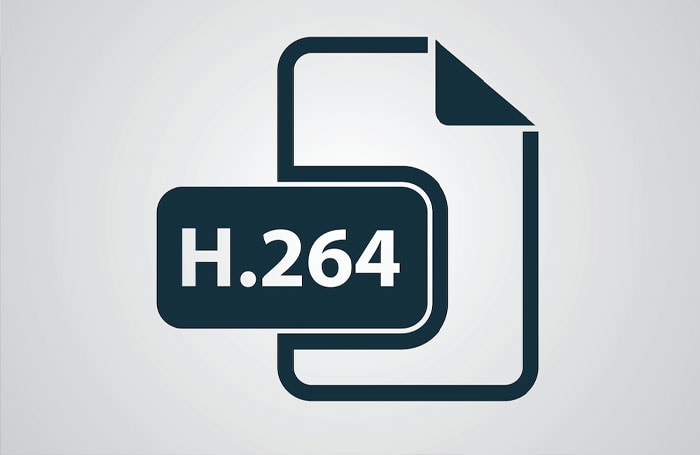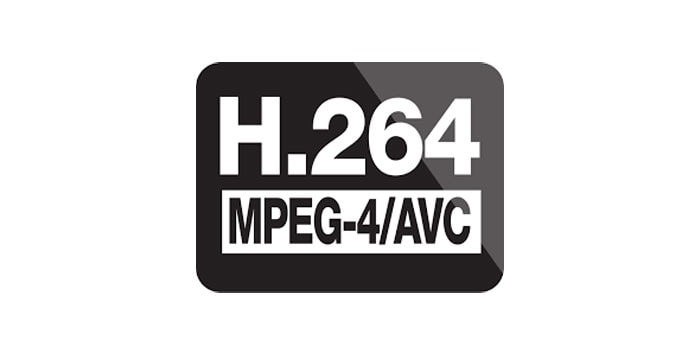
When dealing with video files and formats, there is a bewildering array of information to process. Whether you are interested in image quality and video quality, video compression, or a thousand different other things, there's a huge amount to learn. And choosing the best video codec for editing can be difficult.
H264 is one of the most common codecs that you will come across. Here, we'll explain everything you need to know about this ubiquitous codec.
What Is H264?

Put simply, H264 is a video codec. A codec is either hardware or software (most commonly software for our purposes) that either compresses or decompresses video.
H264 is part of the MPEG-4 video standard and is more properly known as MPEG-4 Part 10 Advanced Video Coding (AVC). This supports many different frame rates and resolutions and is an extremely efficient codec, hence its popularity with streamers and video content producers.
It's also much less prone to errors and supports a wider range of color palettes, producing better image quality.
Video Compression Technology
Video compression is used to reduce the size of a video file, converting raw video files into something smaller. H264 is a lossy compression standard, which means that the codec removes extraneous information to produce smaller file sizes without materially affecting the quality. It uses high-efficiency video coding to achieve this.
This is analogous to the way that MP3s produce smaller sound files to make them easier to share over the internet. H264 just does it with video rather than sound.
What Is H264 Used For?

H264 is useful because it allows advanced video coding and is most typically used in streaming video. Indeed, it's something of an industry standard video compression format now, so if you are interested in streaming videos it's worth understanding it.
One of the great advantages of H264 video is that it can be streamed to multiple different sources simultaneously without degradation of video quality.
Flexible Codec
It is also an extremely flexible codec which allows H264 video to be used in a variety of different ways. Streaming, after all, doesn't just mean catching up on the latest Netflix show.
Video content can be many things. It can also be live video conferencing or streaming video from a mobile phone. It can be internet video streaming for Twitch or TikTok. There's a vast variety of scenarios it can be used for.
Having said that, H264 is also ideal for high-definition TV broadcasting and Netflix does use it as a streaming protocol.
Because H264 can encode high-quality video even over low bandwidth usage, it makes for easy video transmission in a number of different scenarios.
This makes it an extremely flexible solution and whatever your requirements are, you can be sure of good video quality.
How Does H264 Work?

Very well! But, in a more technical sense, the H264 video compression standard performs different tasks to produce the compressed data. These are prediction, transformation, and the final video encoding.
It utilizes what is known as a block-oriented standard to produce the individual frames of video that you see. When the video codec is used, the video data is produced in macroblocks. These are block sizes of 16 x 16 pixels which go to make up the image you see.
It also uses inter-frame compression. This means that it looks for similarities between frames. This allows it to reduce the amount of data stored, resulting in smaller file sizes with no degradation in quality.
When the H264 video coding process is reversed, the video is received in the compressed bitstream form and decoded. The decoded video sequence is what is displayed. If everything has been done correctly, the reconstituted video will have the same image quality as it had before transmission.
While there are more technical elements that can be delved into, this covers the broad fundamentals. And because the image quality doesn't degrade, it is ideal for any kind of online video content.
The Benefits of Using H264
H264 is, by its nature, a very efficient video codec, so there are several advantages when it comes to using it.
Video Quality
The simplest is video quality. If you're looking to produce high-quality video content, H264 is the way to go. It produces clear, bright, and sharp video images that are ideal if you want to stream video. And it manages to do it while still keeping file sizes small.
Bandwidth Requirements
Because H264 produces comparatively small digital video files, you need much less bandwidth to transmit high-quality video. Since not everyone has access to high-speed internet, this is obviously advantageous for reaching audiences who won't necessarily have access to the fastest speeds. There's also much lower latency compared to other codecs, meaning there's much less buffering.
Efficiency
H264 is an extremely efficient video encoder, especially when compared to other codecs. For example, when compared to the older MPEG-2 standard, it is twice as efficient at encoding and results in file sizes that are three times smaller. This is not only ideal for streaming but also means it takes less space to store video compared to other formats.
Lower Bitrate
When compared to motion JPEG video, H264 has a much lower bitrate. This can be anything up to 80% less. What this low bitrate means is that it is transmitting less data per second. This is also part of why it is a great choice for streaming.
Slow Motion
Finally, it's a great choice if you're looking to capture slow motion. The efficiency of the codex (coupled with advanced audio coding) makes it ideal for slow motion. It also doesn't result in visible artifacts such as the "blockiness" that sometimes occurs with less efficient codecs.
H265 vs H264
You may also like: H.265 vs H.264: Comparison Guide Which is BetterH265 is a newer version of the H264 codex and has certain advantages over the older format. H265 is known as HVEC, which stands for High Efficiency Video Coding. It is designed to support higher resolutions than H264 to complement the next generation of video content while maintaining the same compressed bitrate or even improving on it.
However, it is also worth noting that H265 requires much more processing power to encode and decode than H264 so you need to have appropriate hardware to cope with the increase in processing power required.
While some top-end, high definition consumer TV units are starting to ship with the relevant hardware, this is by no means universal yet. And, of course, with new hardware comes an inevitability - higher cost!
Final Words
While there are a lot of technical details around the H264 video compression standard, it can be broken down relatively simply. H264 is a video compression standard widely used in forms of streaming, whether they're global TV streamers or simple video conferencing units in an office.
It is an efficient, powerful codec that allows for reduced bandwidth without compromising on quality and without needing a vast amount of video storage compared to uncompressed files.
So, if you are video encoding, it's a codec well worth considering!
FAQ
Is H264 Good for 4K?
Yes, H264 is a good codec for 4K. It supports resolutions of 4K and is a common way for the video industry to deliver 4K content over the internet.
So, if you need to deliver 4K content, then H264 can definitely be used for that.










